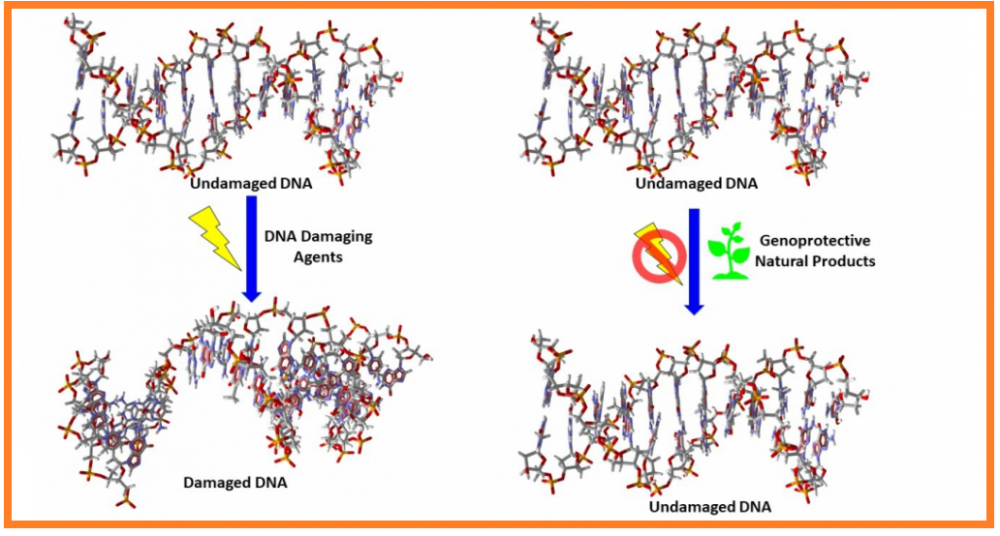JOURNAL 1871
Records of Natural Products
Year: 2021 Issue: 6 November-December (Special Issue Dedicated to the Memory of Professor Ayhan Ulubelen)
p.433 - 462
Viewed 2864 times.
-
Muhammad Torequl Islam

-
Cristina Quispe

-
Mohammad S. Mubarak

-
Bahare Salehi

-
Željko Reiner

-
Miquel Martorell

-
Javad Sharifi-rad

-
William N. Setzer

GRAPHICAL ABSTRACT

ABSTRACT
Although treatment with natural products and the substances derived from them has gained much attention, it is important to know the genomic safety of these substances prior to their use in humans. The present review aims to present the current knowledge on the genoprotective effects and possible mechanism of actions of natural compounds. Therefore, an up-to-date search was conducted using known databases such as PubMed, ScienceDirect, and Clinicaltrials.gov. For the investigation of genotoxic/genoprotective activity of these substances, comet or micronucleus assay were frequently used models applied through eukaryotic test systems, bacterial strains, cultured animal cells or tissues (e.g., mice, rats) but also human by using oxidizing or carcinogenic agent-induced DNA damage capacity. Findings suggest that several extracts, including those from medicinal plants, marine algae or their preparations, antioxidants such as quercetin, retinoids, resveratrol, hyaluronic acid, carnosol, rosmarinic acid, and naringin have shown genoprotective effects in various test systems. Antioxidant, anti-inflammatory, mitogenic, reduction of DNA strand breaks and DNA lesions, formation of micronucleus, and chromosomal aberrations were the observed mechanisms of action of genoprotective substances. In conclusion, this review highlights the importance of natural products, especially dietary antioxidants, which can be safely used for the treatment of various diseases.
KEYWORDS- Antioxidants
- extracts
- genoprotective effects
- Comet assay
- DNA damage